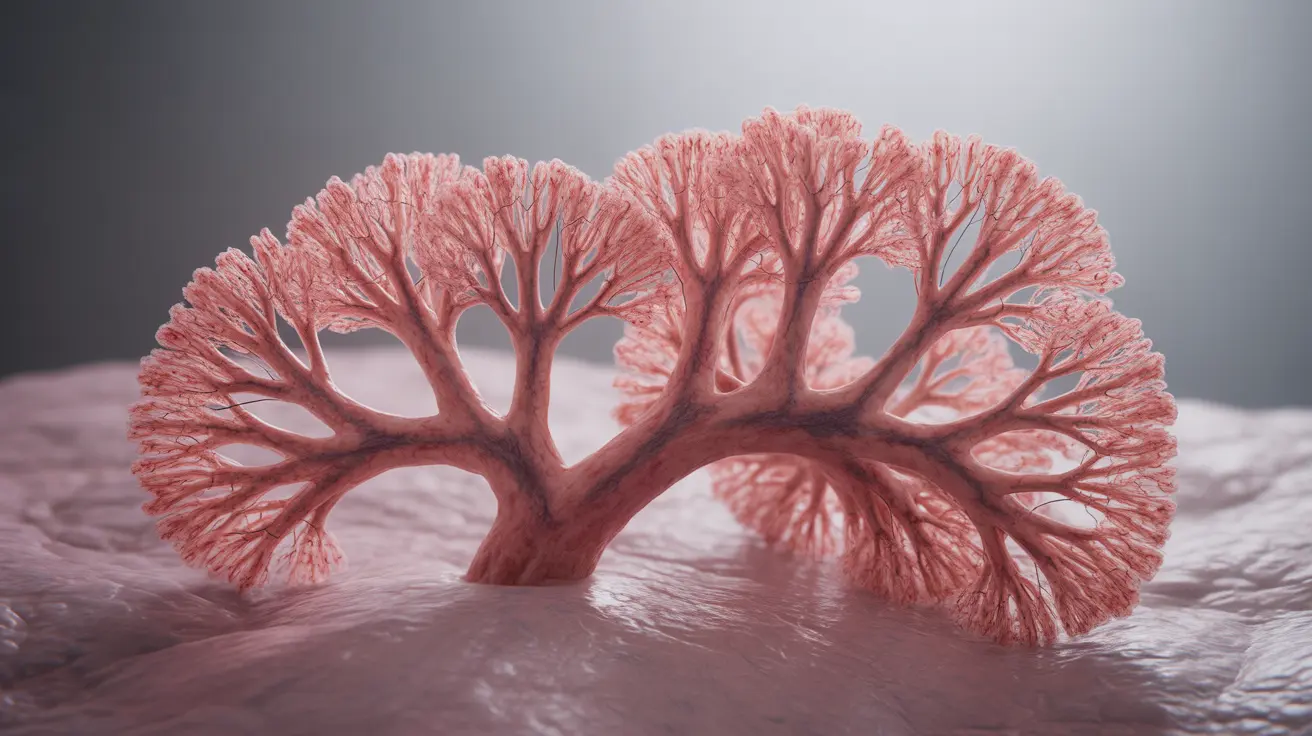Cardiac muscle tissue is a specialized type of muscle that forms the heart's muscular wall, enabling its crucial role in pumping blood throughout the body. This remarkable tissue possesses unique characteristics that make it perfectly suited for maintaining consistent, rhythmic contractions throughout our lifetime.
Understanding cardiac muscle tissue is essential for grasping how the heart functions and recognizing various heart conditions. This article explores its distinctive features, functions, and the factors affecting its health.
Structural Features and Organization
Cardiac muscle tissue consists of individually branched muscle cells called cardiomyocytes. These cells feature several unique characteristics that distinguish them from other muscle types:
- Striations (cross-striped appearance)
- Branched cellular structure
- Centrally located nuclei
- Abundant mitochondria
- Intercalated discs between cells
The branched structure of cardiac muscle cells creates a complex network that allows for coordinated contractions. This arrangement ensures that the heart can maintain its pumping efficiency while distributing force evenly across the tissue.
Comparison with Other Muscle Types
Cardiac muscle tissue differs significantly from both skeletal and smooth muscle in several ways:
Compared to Skeletal Muscle
- Involuntary control
- Single nuclei per cell
- Branched cellular structure
- Contains intercalated discs
- Cannot regenerate extensively
Compared to Smooth Muscle
- Striated appearance
- Faster contractions
- More mitochondria
- Higher energy demands
- More organized structure
The Role of Intercalated Discs and Gap Junctions
Intercalated discs are specialized junctions between cardiac muscle cells that serve multiple crucial functions:
- Mechanical coupling between cells
- Electrical signal transmission
- Coordinated contraction
- Maintaining tissue integrity
Gap junctions within these discs allow for rapid electrical communication between cells, ensuring that the heart beats as a single, coordinated unit. This sophisticated communication network is essential for maintaining regular heart rhythm.
Impact of Exercise on Cardiac Muscle
Regular physical activity significantly influences cardiac muscle tissue health:
- Increased muscle fiber strength
- Enhanced blood supply
- Improved mitochondrial function
- Better oxygen utilization
- Reduced risk of heart disease
Exercise promotes beneficial adaptations in cardiac muscle tissue, leading to improved heart function and overall cardiovascular health. These changes help the heart work more efficiently during both rest and physical activity.
Common Cardiac Muscle Diseases
Several conditions can affect cardiac muscle tissue health:
Cardiomyopathy
- Dilated cardiomyopathy
- Hypertrophic cardiomyopathy
- Restrictive cardiomyopathy
Common Symptoms
- Shortness of breath
- Chest pain
- Fatigue
- Irregular heartbeat
- Swelling in legs and ankles
Frequently Asked Questions
What are the unique structural features of cardiac muscle tissue that enable the heart to contract effectively? Cardiac muscle tissue features branched cells with intercalated discs, abundant mitochondria, and a striated appearance. These features allow for coordinated contractions, efficient energy production, and proper force distribution throughout the heart.
How does cardiac muscle tissue differ from skeletal and smooth muscle tissue in function and appearance? Cardiac muscle tissue is involuntarily controlled, has branched cells with single nuclei, and contains intercalated discs. Unlike skeletal muscle, it can't be consciously controlled, and unlike smooth muscle, it has a striated appearance and contracts more rapidly.
What are common symptoms and causes of diseases affecting cardiac muscle tissue, such as cardiomyopathy? Common symptoms include shortness of breath, chest pain, fatigue, irregular heartbeat, and swelling. Causes can include genetic factors, infections, certain medications, and other underlying health conditions.
How does exercise impact the health and function of cardiac muscle tissue? Exercise strengthens cardiac muscle tissue, improves blood supply, enhances mitochondrial function, and increases oxygen utilization efficiency. Regular physical activity leads to beneficial adaptations that improve overall heart function.
What roles do intercalated discs and gap junctions play in the coordination of heartbeats? Intercalated discs and gap junctions enable mechanical and electrical coupling between cardiac muscle cells, allowing for coordinated contractions and proper signal transmission throughout the heart tissue. This ensures synchronized heartbeats and efficient pumping function.




